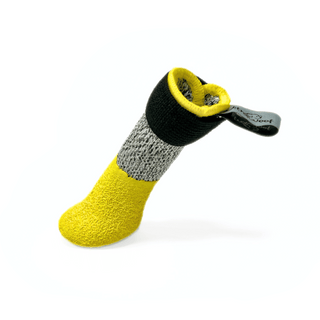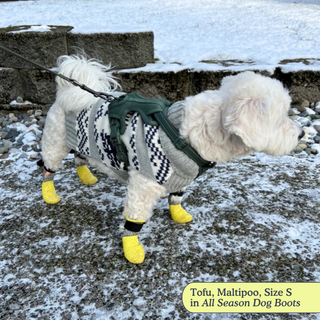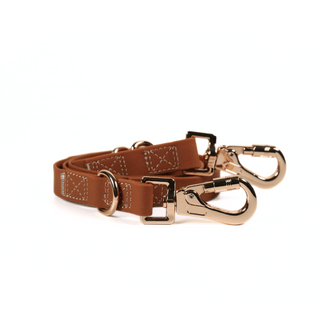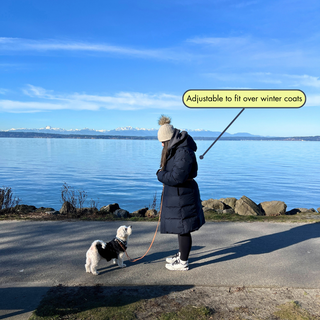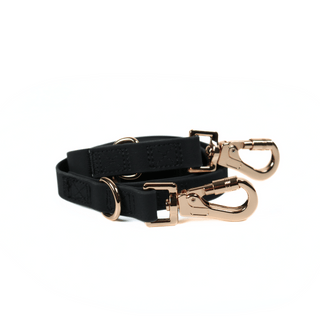If your dog suffers from allergies, especially grass allergies, you may have noticed them constantly licking or chewing their paws after walks. Environmental allergens such as pollen, grass, and mold can trigger irritation, leading to discomfort and even infections. One effective solution many pet owners overlook is dog shoes. But do they actually help with allergies? Let’s explore how dog shoes can protect sensitive paws and improve your furry friend’s quality of life.

How Grass and Other Allergens Affect Your Dog’s Paws
Dogs are exposed to allergens every time they step outside. Grass, weeds, pollen, mold spores, and even chemicals from lawn treatments can cling to their paws. For dogs with sensitivities, this can lead to itching, redness, swelling, and excessive paw licking. Over time, this irritation can cause skin infections, sores, or inflammation that requires medical treatment.
Common symptoms of paw allergies include:
- Persistent licking or chewing of paws
- Red, inflamed, or swollen paw pads
- Dry, cracked, or irritated skin between the toes
- Hair loss around the paws
- Reluctance to walk on grass or certain surfaces
By preventing direct contact with allergens, dog boots act as a protective barrier, reducing irritation and preventing allergic reactions from worsening.
Do Dog Shoes Prevent Grass Allergies?
Yes! Dog shoes are one of the most effective ways to shield your dog’s paws from direct exposure to allergens like grass, weeds, and pollen. Here’s how they help:
-
Barrier Protection: Dog shoes prevent allergens from sticking to the paws and between the toes.
-
Prevents Licking & Chewing: With less exposure to allergens, dogs are less likely to develop itchy, irritated paws that they feel the need to lick or chew.
-
Reduces Risk of Secondary Infections: Constant licking weakens the skin barrier, making it easier for bacteria and yeast to cause infections. Shoes minimize this risk.
-
Keeps Paws Clean: Dog shoes prevent dirt, mud, and allergens from being tracked into the house, reducing overall allergen exposure.
Are Dog Boots Effective for Other Allergies?
Beyond grass allergies, dog boots can also help with:
Pollen Allergies
Pollen sticks to fur and paws, triggering allergic reactions in sensitive dogs. Dog boots minimize contact and keep paws clean before they step back inside your home.
Chemical Sensitivities
Many lawns and sidewalks are treated with pesticides, herbicides, and de-icing salts. These chemicals can irritate your dog’s paws and even cause burns. Dog boots provide an essential layer of protection against these harmful substances.

Mold and Fungal Spores
Damp environments, especially in fall and winter, can expose your dog’s paws to mold and fungal spores. Dog boots reduce the risk of exposure and help prevent related skin issues.
How to Choose the Best Dog Shoes for Allergies
Not all dog shoes are created equal, so selecting the right pair for allergy protection is crucial. Look for these features:
-
Lightweight Material: Choose lightweight fabrics to prevent excessive sweating and moisture buildup.
-
Comfortable Fit: A secure fit prevents debris from getting inside while ensuring comfort.
-
Non-Slip Soles: Helps your dog maintain traction on various surfaces.
-
Easy to Clean: Opt for machine-washable or wipeable shoes to keep allergens from accumulating.
-
Adjustable Straps: Ensure a secure fit that stays in place during walks.

For more details, we also wrote a post about how to find the right pair of dog booties for your dog.
How to Get Your Dog Used to Wearing Shoes
If your dog has never worn shoes before, they may take some time to adjust. Follow these steps for a smooth transition:
-
Start Indoors: Let them wear the shoes inside for short periods.
-
Use Positive Reinforcement: Reward with treats and praise to create a positive association.
-
Increase Wear Time Gradually: Begin with a few minutes and work up to longer walks.
-
Check for Comfort: Ensure a proper fit and adjust straps as needed.
FAQs About Dog Shoes and Allergies
Can dog shoes completely eliminate allergy symptoms?
While shoes significantly reduce exposure to allergens, they may not eliminate all symptoms. Other measures like paw wipes, hypoallergenic shampoos, and allergy medications may also be necessary.
Are dog shoes necessary year-round?
If your dog suffers from seasonal allergies, they may only need shoes during peak allergy seasons. However, dogs with chronic allergies might benefit from wearing them year-round.
How do I clean dog shoes to prevent allergen buildup?
Wash shoes regularly with mild soap and warm water. Our dog shoes are machine washable, just toss into a lingerie bag and into the washing machine. Lay flat to dry!
Final Thoughts
Dog shoes are a simple yet highly effective solution for protecting dogs with allergies, especially grass allergies. By preventing direct contact with allergens, reducing paw licking, and keeping paws clean, they can improve your dog’s comfort and health. If your pup struggles with allergies, investing in a good pair of dog shoes could make a significant difference in their daily life!
For smaller dogs, some pet parents have resorted to putting socks on their dogs to protect against allergies. Luckily, we offer a line of dog boots that are not only comfortable, but can help protect against allergens and other harmful things outdoors.






